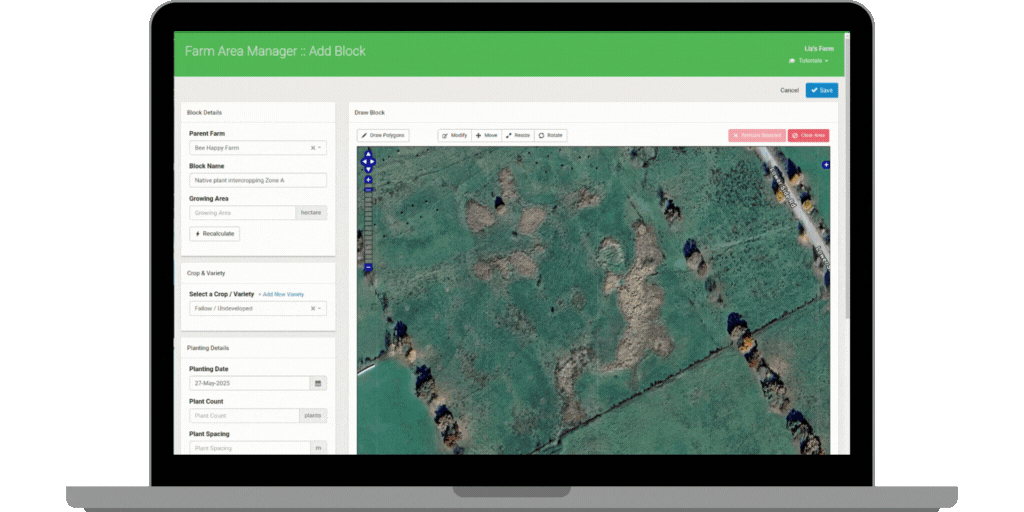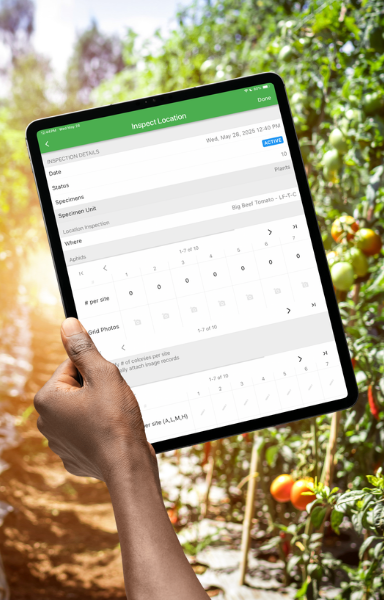The world of agriculture is constantly evolving. Trade challenges, coupled with changing climates and shifting industry landscapes is always pushing growers to seek innovative solutions. Solutions have to balance enhanced productivity while minimizing environmental impact. This pursuit has led to a growing adoption of nuianced and responsive strategies like Integrated Pest Management (IPM). IPM strategies are becoming increasingly necessary due to complex challenges posed by climate change and the persistent issue of pesticide resistance.
As global temperatures rise, pest distributions are shifting, with many species expanding their geographical range and adapting to new environments. Growers are encountering unfamiliar pests or seeing existing ones behave differently, requiring more dynamic management strategies. Additionally, the reliance on conventional pesticides has inadvertently fueled the evolution of pesticide resistance in many pest populations, rendering some traditional chemical controls less effective over time. In this changing agricultural landscape, IPM offers a sustainable solution. But what exactly is IPM, and how can technology, specifically platforms like Croptracker, empower growers to implement these strategies effectively?

Defining Integrated Pest Management
At its core, Integrated Pest Management (IPM) is an ecosystem-based strategy that focuses on long-term prevention of pests or their damage through a combination of techniques such as biological control, habitat manipulation, modification of cultural practices, and use of resistant varieties. It's a holistic approach that moves beyond simply spraying chemicals at the first sign of a problem. Instead, IPM emphasizes understanding the pest's life cycle and its interaction with the crop and the environment, allowing for more targeted and sustainable interventions. The goal is to manage pest populations below economically damaging levels, rather than aiming for complete eradication, which can be unsustainable and harmful to beneficial organisms.
Pillars of Integrated Pest Management: Strategies and Tools
IPM isn't a single solution but rather a toolbox of diverse strategies and principles working in harmony. Understanding these foundational elements is crucial for effective implementation.
Key Principles and Tools of IPM:
- Prevention: The first line of defense in IPM is to prevent pest problems from occurring in the first place. This involves choosing pest-resistant crop varieties, practicing good sanitation to remove pest hiding spots, and implementing crop rotation to disrupt pest life cycles. For example, planting cover crops can suppress weeds and attract beneficial insects, or ensuring you have clean equipment to avoid spreading pathogens between fields.
- Monitoring and Scouting: Regular and systematic observation of crops for pest presence, population levels, and damage is fundamental. This involves physically inspecting plants, using traps to capture pests, and recording data over time. Accurate identification of the pest is also critical, as different pests require different management approaches Without proper monitoring, interventions can be misdirected or unnecessary.
- Accurate Identification: Knowing precisely what pest you're dealing with – whether it's an insect, disease, or weed – is paramount. Misidentification can lead to ineffective treatments and wasted resources. Resources like diagnostic labs and expert entomologists or plant pathologists play a key role here.
- Setting Action Thresholds: Not every pest presence warrants intervention. IPM emphasizes understanding the "action threshold" – the point at which pest populations or environmental conditions indicate that pest control action is economically justified to prevent unacceptable damage. This avoids unnecessary interventions and protects beneficial organisms.
- Cultural Controls: These are practices that make the environment less favorable for pests. Examples include optimizing irrigation and fertilization to promote healthy plant growth (which can better withstand pest attacks), proper timing of planting and harvesting to avoid peak pest activity, and improving soil health.
- Physical/Mechanical Controls: These methods involve physically removing or excluding pests. Examples include hand-picking weeds or large insects, using barriers like netting or row covers to keep pests out, or trapping rodents.
- Biological Controls: This involves using natural enemies – predators, parasites, or pathogens – to control pest populations. This could mean introducing beneficial insects like ladybugs to control aphids, or using microbial pesticides. Protecting and enhancing existing populations of natural enemies by providing habitat is also a key aspect.
- Chemical Controls (Judicious Use): When other methods aren't sufficient, pesticides may be used, but always as a last resort and with careful consideration. The IPM approach emphasizes using the most selective and least toxic chemicals, applied at the right time and in the right way, to minimize harm to beneficial organisms and the environment. This also includes the use of organic-approved pest prevent and plant protection treatments.
By integrating these strategies, growers can build resilient agricultural systems that are less reliant on broad-spectrum pesticides and more in tune with natural processes. Croptracker provides the digital infrastructure to manage and optimize these diverse IPM elements.

Croptracker Features and IPM Strategies
Mapping for Proactive Pest and Pollinator Management
A fundamental aspect of effective IPM is understanding your land. Croptracker's mapping features offer a powerful tool for growers to visualize and plan their pest management strategies proactively. Being able to clearly define areas for specific cultivation practices supports pest control and beneficial insect populations.
With Croptracker, you can map out fallow land and field borders with precision. This isn't just about drawing lines on a screen; it's about strategic planning. For instance, you can identify ideal locations for companion planting, where specific crops are grown together to deter pests or attract beneficial insects. Think of marigolds planted near tomatoes to repel nematodes, or dill and parsley providing habitat for predatory wasps.
Similarly, mapping allows for the precise placement of native plant areas. These areas serve as crucial habitats for pollinators and natural enemies of pests, enhancing biodiversity and creating a more resilient ecosystem within your farm. By providing a clear visual representation of these designated areas, Croptracker helps growers implement these proactive biological control measures with intention and accuracy, moving beyond reactive pest control.

Production Practices and the Punch Clock: Tracking Effectiveness
Implementing IPM strategies often involves a variety of cultural practices that go beyond chemical applications. These can include anything from specific irrigation schedules to manual weed removal or introducing beneficial insects. How do you ensure these vital tasks are completed efficiently and, more importantly, track their impact?
Croptracker's Production Practice and Punch Clock features provide a seamless solution for this. You can easily plan tasks and allocate work to specific employees within the system, detailing specific IPM-related activities like "release ladybugs in orchard block 3" or "prune affected branches in row 7." As employees complete these tasks, the Punch Clock records precisely when and where the work was done.
This level of detail is invaluable. At the end of the season, or even mid-growth, you can leverage this data to check the effectiveness of particular activities related to your harvest yields. Did that new organic soil amendment really reduce pest pressure? Did increased scouting frequency lead to earlier intervention and better crop health? By correlating specific production practices with subsequent yield data, you gain actionable insights that inform future IPM decisions. This systematic approach allows for continuous improvement and a deeper understanding of what truly works on your farm.
Quality Control: Digitizing and Standardizing Scouting
Effective IPM hinges on accurate and timely information. You can't manage what you don't monitor. Traditional pest scouting often involves paper forms and subjective observations, making it challenging to track trends and ensure consistency across a large farm.
Croptracker's Quality Control module revolutionizes pest and disease scouting . It allows you to set up standardized and digitized scouting information templates. Croptracker users work with support staff to create custom forms within the software that prompt scouts for specific data points, such as pest species, population density, crop damage, and environmental conditions. This standardization ensures consistency regardless of who is performing the scouting. Furthermore, these scouting activities can be set to happen regularly, establishing a routine that helps you stay ahead of potential outbreaks.
The real power comes in the ability to track pest and disease progress over time. Has an ‘Action Threshold' been reached? – it’s easy to see when all scouting results are centralized. As data is collected, Croptracker compiles it into historical records, allowing you to identify emerging trends, pinpoint problem areas, and assess the efficacy of previous interventions. Crucially, the system supports the inclusion of images with scouting reports. A picture truly is worth a thousand words when it comes to identifying pests or documenting disease progression, providing undeniable visual evidence that enhances decision-making. This digitized, consistent, and visually rich data stream is a cornerstone of proactive and responsive IPM.

Spray Records: Comprehensive Treatment Management
While IPM prioritizes prevention and non-chemical controls, there are instances where treatments are necessary to manage pest populations. The key is to apply treatments strategically, using the least harmful options available, and maintaining meticulous records of every application.
Croptracker's Spray record keeping feature is designed to support this crucial aspect of IPM. It allows you to record every treatment applied, why it was applied, whether it's a conventional pesticide, a biological control agent, or a natural remedy. The system is flexible enough to accommodate custom treatments, ensuring that even unique, organic or experimental applications are documented. You can accurately log applications of approved organic substances, maintaining compliance and transparency.
Beyond simply listing what was sprayed, Croptracker allows you to record critical details like application rates, weather conditions during application, and the specific blocks or rows treated. This comprehensive record-keeping is vital for several reasons: it aids in compliance with regulations, helps evaluate the effectiveness of different treatments over time, and supports traceability efforts. By having a clear and accessible history of all treatments, growers can make more informed decisions about future applications, aligning with the IPM principle of using interventions only when necessary and in the most targeted way possible.
The Croptracker Advantage for IPM
Implementing a robust IPM strategy is a continuous journey of observation, analysis, and adaptation. Croptracker provides the digital framework to support growers at every stage of this journey. From the initial planning of beneficial habitats through precise mapping, to the diligent execution and tracking of cultural practices via the Punch Clock module, to the meticulous monitoring of pest activity through Quality Control, and finally, to the responsible recording of all treatments, Croptracker empowers growers with the tools to cultivate smarter farms.
By providing clear, accurate, and accessible data, Croptracker helps farmers make evidence-based decisions, leading to healthier crops, reduced reliance on conventional pesticides, and a more sustainable agricultural future. It's about moving beyond reactive measures and embracing a proactive, intelligent approach to pest management.

